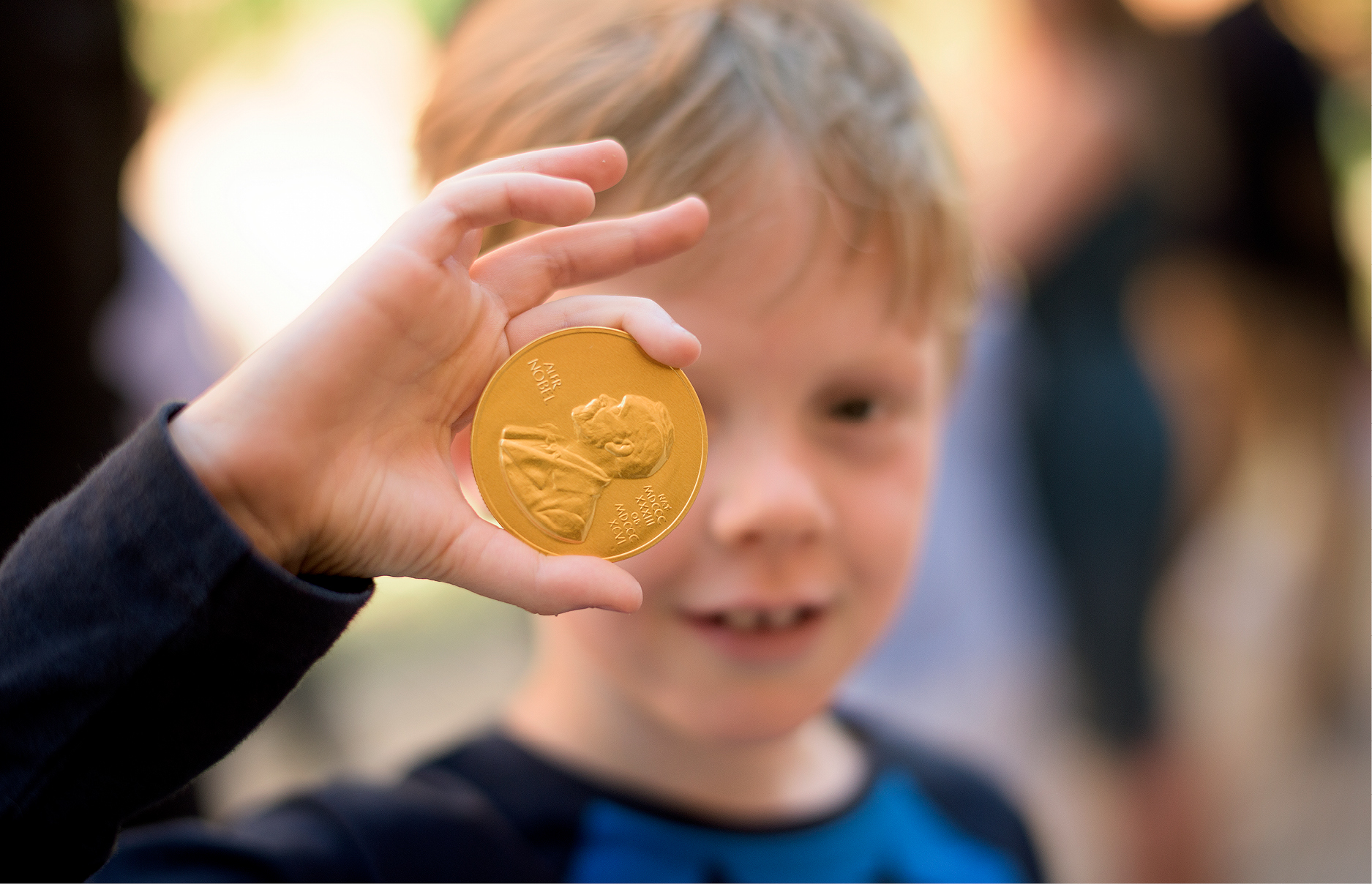Asymmetric Organocatalysis—A Game Changer
Abstract
This year’s Nobel Prize in Chemistry was awarded to Benjamin List and David MacMillan “for the development of asymmetric organocatalysis.” IUPAC congratulates the laureates for their achievements.
Benjamin List is co-author of the readily available special topic paper “Organocatalysis Emerging as a Technology” published in the IUPAC journal Pure and Applied Chemistry <https://doi.org/10.1515/pac-2021-0501> (AOP 13 July 2021). This paper is part of a collection reviewing emerging technologies within the IUPAC Top 10 project which showcases the transformative value of Chemistry, informing the general public of the potential of the chemical sciences to foster the well-being of Society and the sustainability of our Planet. Organocatalysis was one technology highlighted in 2019 (See Chem Int Apr 2019; https://doi.org/10.1515/ci-2019-0203).
David MacMillan received the Thieme-IUPAC Prize in 2006, a Prize awarded since 1992 to scientists under 40 whose independent research deals with synthesis in the broadest context of organic chemistry. This includes organometallic chemistry, medicinal and biological chemistry, designed molecules, or materials, which have had a major impact in synthetic organic chemistry. It is awarded every two years and usually presented at the IUPAC International Conference of Organic Synthesis ICOS.
Chemists have always been inspired by nature. A few years back, researchers dreamt of a new kind of catalysts that, like most natural enzymes, would not require the use of expensive metals. “Organocatalysis” was born in the late 1990s and has not stopped growing. According to Paolo Melchiorre, one of the leading experts in the field, organocatalysis was successful because “[It] was quite democratic, everyone could have access to it without needing expensive reagents or a glovebox, which allowed many young researchers to start their independent careers, and quickly assembled a community of international experts that become a great incubator of ideas for catalysis without metals.”
Following the announcement by the Royal Swedish Academy of Science, Peter Somfai, member of the Nobel Committee, has claimed that this year’s award “is a game changer. Like a new chess piece that is very, very powerful.”
https://iupac.org/asymmetric-organocatalysis-a-game-changer/

© Nobel Media by Photographer Alexander Mahmoud
©2022 IUPAC & De Gruyter. This work is licensed under a Creative Commons Attribution-NonCommercial-NoDerivatives 4.0 International License. For more information, please visit: http://creativecommons.org/licenses/by-nc-nd/4.0/
Articles in the same Issue
- Masthead - Full issue pdf
- President's Column
- Bonding the Chemistry Community
- Ethics, Diversity, Equity and Inclusion
- Features
- Young chemists voice in support of the SDGs
- Downstream
- The Role of Artificial Intelligence in Drug Discovery and Development
- Key points to succeed in Artificial Intelligence drug discovery projects
- Tiny nanopesticides promise big gains to farmers
- IUPAC Wire
- Asymmetric Organocatalysis—A Game Changer
- Professors Balzani and Oganessian to Receive the First UNESCO-Russia Mendeleev International Prize in the Basic Sciences
- Paul Anastas wins the Volvo Environment Prize 2021
- 2022 Franzosini Award—Call For Nominations
- Grand Prix de la Fondation de la Maison de la Chimie—2022 call for nominations
- Mei-Hung Chiu elected on the ISC board
- 2022 IUPAC-Solvay International Award For Young Chemists—Call For Applicants
- SDGs for the Benefit of Society—Video from IYCN symposium, August 2021
- INCHI Outreach
- An interview with Tsuyoshi Minami
- In Memoriam
- Up 4 Discussion
- Royal Society of Chemistry Provides Guidelines for Censorship to its Editors
- Making an imPACt
- Metrological and quality concepts in analytical chemistry (IUPAC Recommendations 2021)
- A unified pH scale for all solvents: part I—intention and reasoning (IUPAC Technical Report)
- Structure-based nomenclature for irregular linear, star, comb, and brush polymers (IUPAC Recommendations 2020)
- Feasibility of multifunction calibration of H+-responsive glass electrodes in seawater (IUPAC Technical Report)
- IUPAC Provisional Recommendations
- Bookworm
- Chemistry Teacher International Enters Fourth Year
- Internet Connection
- Online Chemistry Simulations to Intrigue, Engage and Attract 21st Century Science Students
- Conference Call
- Green Chemistry Postgraduate Summer School
- Congress of the Slovak & Czech Chemical Societies
- The 53rd International Chemistry Olympiad in (Virtual) Japan
- Where 2B & Y
- POLY-CHAR [Halle|Siegen] 2022
- MACRO 2022, the 49th World Polymer Congress
Articles in the same Issue
- Masthead - Full issue pdf
- President's Column
- Bonding the Chemistry Community
- Ethics, Diversity, Equity and Inclusion
- Features
- Young chemists voice in support of the SDGs
- Downstream
- The Role of Artificial Intelligence in Drug Discovery and Development
- Key points to succeed in Artificial Intelligence drug discovery projects
- Tiny nanopesticides promise big gains to farmers
- IUPAC Wire
- Asymmetric Organocatalysis—A Game Changer
- Professors Balzani and Oganessian to Receive the First UNESCO-Russia Mendeleev International Prize in the Basic Sciences
- Paul Anastas wins the Volvo Environment Prize 2021
- 2022 Franzosini Award—Call For Nominations
- Grand Prix de la Fondation de la Maison de la Chimie—2022 call for nominations
- Mei-Hung Chiu elected on the ISC board
- 2022 IUPAC-Solvay International Award For Young Chemists—Call For Applicants
- SDGs for the Benefit of Society—Video from IYCN symposium, August 2021
- INCHI Outreach
- An interview with Tsuyoshi Minami
- In Memoriam
- Up 4 Discussion
- Royal Society of Chemistry Provides Guidelines for Censorship to its Editors
- Making an imPACt
- Metrological and quality concepts in analytical chemistry (IUPAC Recommendations 2021)
- A unified pH scale for all solvents: part I—intention and reasoning (IUPAC Technical Report)
- Structure-based nomenclature for irregular linear, star, comb, and brush polymers (IUPAC Recommendations 2020)
- Feasibility of multifunction calibration of H+-responsive glass electrodes in seawater (IUPAC Technical Report)
- IUPAC Provisional Recommendations
- Bookworm
- Chemistry Teacher International Enters Fourth Year
- Internet Connection
- Online Chemistry Simulations to Intrigue, Engage and Attract 21st Century Science Students
- Conference Call
- Green Chemistry Postgraduate Summer School
- Congress of the Slovak & Czech Chemical Societies
- The 53rd International Chemistry Olympiad in (Virtual) Japan
- Where 2B & Y
- POLY-CHAR [Halle|Siegen] 2022
- MACRO 2022, the 49th World Polymer Congress

